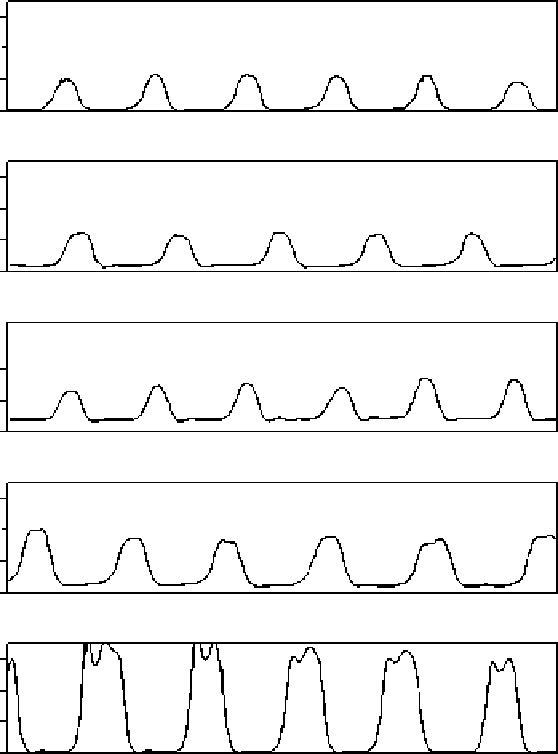Biomedical Engineering Reference
In-Depth Information
600
400
200
0
(a)
600
400
200
0
(b)
600
400
200
0
(c)
600
400
200
0
(d)
600
400
200
0
(e)
Figure 5.12
The force profile for five different soft materials: (a) ICF400, (b) A2FR, (c) H1N,
(d) Silicone rubber-1, and (e) Silicone rubber-2
Another important conclusion drawn from Figure 5.12 is that the waveform of the
transferred pressure also depends on the softness of the grasped material. For soft material,
the pressure has a half-sinusoidal form. For harder materials, the pressure appears to be
more like a pulse wave.
These force profiles can be associated with the response of soft materials grasping at
low frequencies. When a soft material is grasped, it gradually becomes compressed and
the resistance against this increases correspondingly. When the grasper starts to open,
due to the same spring action, the soft material starts to expand so that it maintains its
contact with the grasper jaws. This causes a smooth rise and fall in the force profile,
which is similar to a sinusoidal wave. In fact, the frequency content of the force profile
also shows that this force profile can be approximated to a sinusoidal wave. On the
other hand, when grasping hard material, once the grasper touches the object the force

